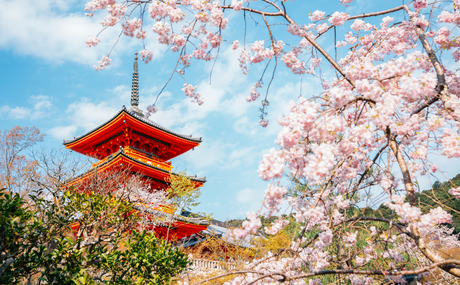Fujin and Raijin are two of the most iconic deities in Japanese mythology, representing wind and thunder respectively. Their powerful imagery and stories have been deeply embedded in Japanese culture, art, and religion for centuries. Often depicted as fierce and otherworldly beings, they embody the natural forces that have a profound impact on human life and nature.
Who Are Fujin and Raijin?
Fujin, the god of wind, is one of the eldest Shinto gods, believed to have helped shape the world. He is usually depicted as a muscular figure, with a large bag slung over his shoulders. This bag holds the winds, which Fujin releases to create storms or gentle breezes. His role in mythology is both a blessing and a curse—he can bring much-needed winds for sailors and farmers or devastating gales that cause destruction.
Raijin, the god of thunder and lightning, is Fujin’s close counterpart. His appearance is just as fierce, often shown with a drum that he strikes to create thunder. Surrounding him are small, circular drums that emit thunderous roars with every beat. Raijin is also seen as a protector, though his temper can cause natural disasters, such as storms and typhoons.
Myths and Legends
Fujin and Raijin are deeply woven into the fabric of Japanese folklore, appearing in numerous stories and legends. One of the most famous tales involving them is their battle with the hero, Susanoo, the storm god. In this story, Susanoo challenges the deities to bring order to the chaotic forces of nature, seeking to control the winds and storms they command.
Fujin and Raijin also appear in Buddhist traditions, where they are seen as guardians of the faith, standing at the gates of temples to protect them from evil spirits.
Symbolism and Influence
In Japanese art, Fujin and Raijin are often portrayed as powerful, imposing figures. One of the most famous depictions is a set of large folding screens (byōbu) painted by the artist Tawaraya Sōtatsu in the early 17th century. These screens show Fujin and Raijin on opposite sides, with swirling winds and thunder clouds between them, capturing their raw power and divine nature.
The symbolism of Fujin and Raijin extends beyond their roles as gods of wind and thunder. They represent the untamed and unpredictable forces of nature, which can be both nurturing and destructive. In this way, they reflect the dual nature of existence—both creation and destruction are necessary for balance in the world.
Fujin and Raijin in Popular Culture
In modern times, Fujin and Raijin’s imagery has transcended mythology, becoming common in various aspects of Japanese culture, including anime, manga, video games, and even fashion. They are popular motifs in tattoos and modern art, symbolizing strength, protection, and the uncontrollable forces of nature.
Both deities are also depicted in modern media as formidable warriors, often featured in fantasy and action stories where their god-like powers play a central role.
Conclusion
Fujin and Raijin are more than just mythological figures; they are enduring symbols of the natural world’s power and unpredictability. Their presence in Japanese art, culture, and spirituality reminds us of the constant interaction between humanity and the elements. Whether feared or revered, Fujin and Raijin continue to capture the imagination, representing both the beauty and the danger of the forces that shape our world.
































